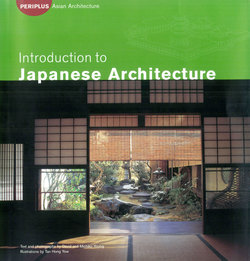Читать книгу Introduction to Japanese Architecture - David Young - Страница 7
ОглавлениеDevelopment of Traditional Architecture
Japanese traditional architecture can be organized into several major genealogical groups on the basis of historical origins and stylistic influences. The most important group is composed primarily of palace, residential, and teahouse styles originating in prehistoric raised structures. Other major groups are commoner residences that evolved from prehistoric pit structures, Buddhist temples, Shinto shrines, theaters, and castles. The diagram below has been simplified to emphasize major trends.
Lookout tower at Yoshinogari, reconstructed Yayoi village.
Tōgudō at Ginkakuji Temple, Kyoto.
HISTORICAL PERIODS
JŌMON
10000-300 BCE
YAYOI
300 BCE—300 CE
TOMB MOUND
300-710 (overlaps with later periods)
ASUKA
538-645
HAKUHŌ
645-710
NARA
710-794
HEIAN
794-1185
KAMAKURA
1185-1333
MUROMACHI
1333-1573
MOMOYAMA
1573-1600
EDO
1600-1868
TEXT SECTIONS
PRE-BUDDHIST CULTURES
Yasaka Shrine, Kyoto.
Tōdaiji Temple, Nara.
